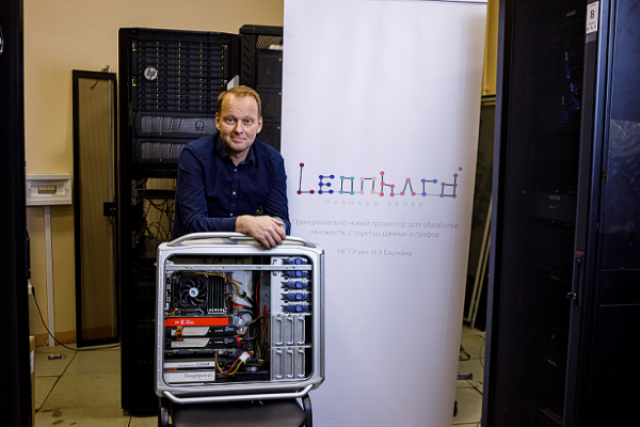The Ministry of Education and Science of Russia has announced a new Russian supercomputer, called "Telegraph", developed at the Bauman Moscow State Technical University (MSTU). According to the ministry, we are talking about the world's first microprocessor and supercomputer, in which a set of DISC discrete mathematics commands was implemented at the hardware level. Telegraph will help to model biological systems, analyze financial flows in real time, store knowledge in artificial intelligence systems and perform other applied tasks.
The department also explained that the Leonhard microprocessor needs 200 times less crystal resources than one representative of the Intel Xeon family. At the same time, the domestic solution consumes 10 times less energy. A relatively low clock frequency of about 200 MHz does not prevent the Russian microprocessor from significantly surpassing the performance of its counterparts from Intel Xeon with 3 GHz. This effect is achieved due to parallelism in the processing of complex data models, which allows Leonard Euler to process up to 120 million graph vertices per second.
Using Leonhard multicore microprocessors, the Moscow State Technical University built a Teragraph supercomputer capable of processing ultra-large graphs of up to 1 trillion vertices (1012).
In conclusion, the department drew attention to the importance of hardware support for discrete mathematics, since most computational tasks are inherently discrete, that is, they require processing sets of numbers. We are talking about numerous optimization problems, graph problems and machine learning problems. And although arithmetic processing (for example, comparing numbers) it is also important, it is only a small part of the actions in optimization algorithms. The main time of modern computing systems is spent on searching for information, sorting through elements of sets, etc. actions. That is why Leonhard, originally designed for discrete optimization tasks, works much faster than universal microprocessors that are designed for arithmetic processing.
Tatiana Dachenkova

